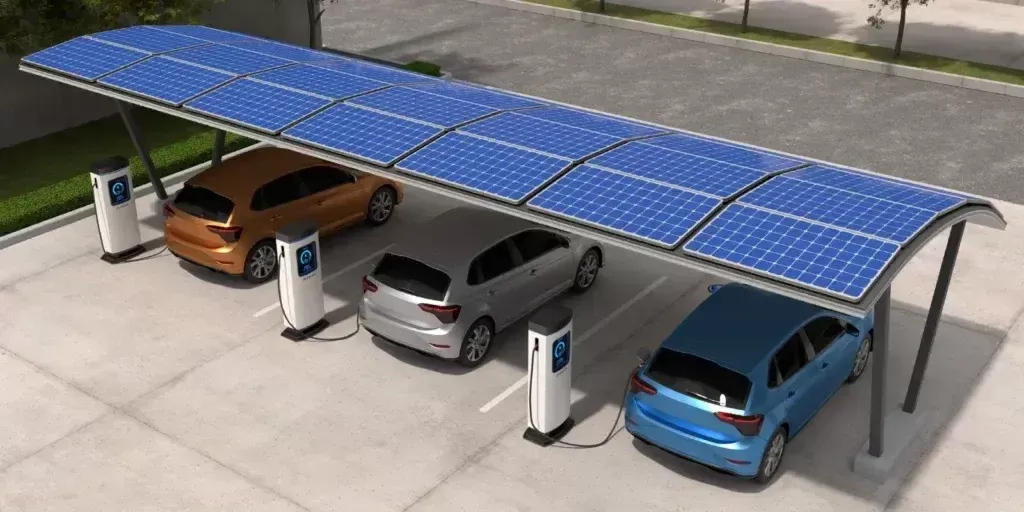Notifications

7 minutes, 19 seconds
-6 Views 0 Comments 0 Likes 0 Reviews

Is the EV Charging Station Business Profitable? Proven Strategies to Maximize Revenue
Introduction
Topper Company is a leading EV chargers manufacturer in China, providing dependable electric vehicle charging stations and comprehensive charging solutions.
As electric vehicles (EVs) become increasingly mainstream, EV charging stations have shifted from a futuristic concept to a thriving business opportunity. However, while demand is growing rapidly, building a profitable EV charging station is far from simple. High infrastructure costs, ongoing operational expenses, and power grid limitations can quickly impact margins without the right approach.
So, is running an EV charging station profitable? The answer is yes—when managed strategically. In this article, we outline key challenges to profitability and explore effective, real-world strategies to increase revenue, enhance user experience, and build long-term success.
Before implementing revenue strategies, it's important to understand the hurdles that can impact your bottom line.
1. High Initial Investment
Setting up an EV charging station requires substantial upfront capital. Costs include site acquisition, purchasing and installing Level 2 or DC fast chargers, and often, upgrading local electrical infrastructure. DC fast chargers, in particular, are costly both to procure and to install.
2. High Operational Expenses
Operating costs can quickly accumulate. These include:
Electricity usage (especially during peak hours)
Routine maintenance and charger repairs
Network software, backend systems, and connectivity
Staffing, security, and customer support
Without strong cost management, fluctuating usage rates can reduce profitability.
3. Grid Capacity Limitations
In many areas, outdated electrical grids cannot support the power demands of multiple high-capacity chargers. Operators may need to limit the number of charging ports or invest in costly upgrades. Inefficient energy management further reduces earning potential.
To overcome these challenges and build a profitable operation, consider the following proven strategies:
Encourage drivers to charge during off-peak hours by offering incentives such as:
Discounted charging rates
Loyalty points or rewards
App-based notifications for optimal charging times
This helps reduce electricity costs, eases grid strain, and allows for premium pricing during peak hours—boosting both efficiency and revenue.
If located near retail, dining, or entertainment centers, offer free parking to customers using Level 2 chargers. Since Level 2 charging takes time, drivers are likely to spend more at nearby businesses, increasing charger usage and opening up partnership opportunities.
Pro Tip: Collaborate with local merchants for parking validation deals that benefit both your station and their business.
By promoting clean transportation, EV charging stations can qualify for carbon offset programs, earning passive income. To benefit:
Register with certified carbon credit programs
Track and report energy usage data
Submit data to regulatory or third-party platforms
While participation requires accurate reporting, it can significantly boost your station’s profitability.
Avoid flat-rate pricing. Instead, use dynamic models such as:
Time-of-Day Pricing: Higher rates during peak hours
Power-Based Pricing: Premiums for fast charging
Time-Based Fees: Charging per minute to reduce charger idling
Membership Options: Offer subscription plans with perks like discounts, reserved access, or exclusive benefits to build customer loyalty and ensure recurring revenue.
Pair your station with solar panels or wind turbines to reduce long-term electricity expenses. Though installation is initially costly, self-generating clean energy leads to lower operational costs and potential eligibility for tax credits and sustainability grants.
Promoting your site as “renewable-powered” can also attract eco-conscious consumers.
Forming partnerships with hotels, restaurants, and shopping malls can:
Share installation and operational costs
Expand your station's reach and visibility
Drive joint marketing promotions (e.g., “Charge your car, get 10% off your meal”)
Such collaborations increase charger usage and provide added value for your partners.
Underused chargers are a drain on resources. Smart software solutions help by:
Tracking real-time usage
Predicting demand and scheduling maintenance
Managing energy load distribution
Apps that let users find, reserve, and monitor chargers enhance convenience and boost usage rates.
Transform your station from a charging point into a destination by adding:
Free Wi-Fi
Vending machines or coffee kiosks
Clean restrooms or seating areas
Digital ad displays or interactive information kiosks
These features improve the customer experience and provide additional income streams through ads, product sales, or leasing spaces.
Use data to guide business decisions by analyzing:
User behavior and peak traffic times
Idle time after charging completion
Power consumption patterns
For instance, underperforming chargers can be relocated, idle fees can be implemented, and pricing can be optimized to reflect energy costs. Data-driven decisions lead to smarter resource allocation and better returns.
EV charging stations offer exciting potential, but success depends on more than just plugging in chargers. To thrive in this evolving industry, station operators must plan carefully, manage costs effectively, and continuously optimize operations.
By embracing innovative pricing models, leveraging green energy initiatives, enhancing customer experience, and using data to guide growth, charging station businesses can move beyond break-even—and toward long-term profitability.
As the electric mobility revolution accelerates, the operators who innovate, adapt, and prioritize value will lead the charge into a more sustainable, profitable future.Know more about Google SEO Directory
China EV Chargers EV Charger Manufacturer EV Charging Solutions

